2017 Alltrack could renew trust in VW
By John Gilbert
If it looks like a Sportswagen, has the same utility as a Sportswagen, and goes like a Sportswagen, it must BE a Sportswagen, right?
Not necessarily. It might also be an Alltrack. Volkswagen is expanding the array of solid and substantial vehicles under the Golf brand name by adding a new and much more capable wagon-like vehicle named the Alltrack for 2017.
While it certainly resembles the venerable and popular wagon that used to be a Jetta but recently changed over to Golf livery, the Alltrack comes on the same MQB platform, bolstered with undercarriage armor plating, and with standard 4Motion all-wheel drive, at a bargain price. The price of the basic S model starts at $25,850 for the 6-speed stick shift, rising to $26,950 for the upgraded SE model, and $32,890 for a fully loaded SEL.
All Alltrack models come equipped with VW’s slick, high-tech 1.8-liter direct-injected and turbocharged 4-cylinder gasoline-sipping engine. No mention of the lack of availability of any turobdiesels, which, under the circumstances, is not surprising.
The surprise, to me, is that VW is going to continue offering the Golf Sportwagen, which is exactly the same length and, at a glance, has the same look, but lacks the impressive off-road capabilities. In my naivete, it seemed to make sense to plug in a couple versions of the Sportwagen as the entry-level Alltrack, but that won’t be happening. The Sportwagen comes with either base front-wheel drive or the upgraded 4Motion model, the Sportwagen S Sport.
Five waves of automotive journalists converged on Seattle for the introduction of the Alltrack, with the added lure of VW’s annual all-model presentation for 2017. We spent one day cruising across the harbor from Seattle on the Bainbridge Island Ferry, and drove most of the day around the twisty rural roads of Bainbridge Island as well as negotiating a rugged off-road course. Back to the ferry and Seattle, and the next day we drove up to Snoqualmie, where we found the rest of the VW fleet parked at the Mount Si Golf Club for our use.All of that was an enticing lure to experience the newest VWs, and it also was on all of our minds that at some point, Volkswagen officials would have to give us some explanation of the “elephant in the room” — the problem with the TDi turbodiesel emission scandal, which has rocked the company and diesel fanciers the world over.
To the company’s credit, there was no attempt to duck the issue. In fact, Hinrich J. Woebcken, the president and CEO of Volkswagen Group of America, led off with his explanation. “We’ve got to regain trust of consumers, and rebuild the brand,” Woebcken began. “We have a crisis with the diesel issue that affects all stakeholders. We’re spending $10 billion to either buy back or modify the TDi vehicles. We’re spending $2.7 billion on a trust fund to cover past and future excesses.
“We are fully committed to the U.S. market, as our new plant in Chattanooga might indicate, and we are adding an engine and planning center in Sacramento, and upgrading our plant in Puebla, Mexico, where we make the Tiguan. We also are strengthening our regional management by making our decision-making more localized.”
By the time Woebcken was finished, discussing a new midsize SUV coming in 2017 as a 7-seater, and long-wheelbase model following the revised Tiguan, we had to be reminded that we had gathered to drive the new Alltrack.
Megan Garbis, manager of product strategy for the Golf family, ticked off the assets of the Alltrack. Leatherette seats, rearview camera, adaptive cruise, forward collision warning and caution, and optional brake assist, lane departure warning, high-beam control, standard foglights, that impressive MQB platform — which will underpin virtually all Volkswagens for the foreseeable future — independent suspension all around, a panoramic sliding sunroof, keyless access and connectivity with touchscreen efficiency.
The only available Alltrack models at launch were equipped with the 6-speed DSG (direct sequential gearbox), which handled the 1.8 smoothly and with ease. It produces 170 horsepower over a range from 4,560 to 6,250 RPMs, and the potency of 199 foot-pounds of torque from 1,600 to 4,400 RPMs.
You don’t have to be a tech wizard to appreciate that the torque thrust comes in barely above idle, at 1,600 revs, and stays constant at that peak up to 4,400, right about where it merges with the horsepower peak. That means you launch as swiftly as you want, and can keep on accelerating beyond reasonable speed limits anywhere in the U.S.
My driving partner and I agreed with the firmly planted feel of stability in the Alltrack, and the razor-sharp handling precision that combines properly firm suspension with quick-reacting steering. The biggest treat was yet to come, however. It was still difficult to separate the Alltrack too far from the old, familiar Sportwagen, and all the talk about off-road capability sounded possibly like flak. Then we turned off-road.
I happened to be driving at the time, and we were waved ahead, into a wooded area that had rocky trails carved into it. This wasn’t a natural area despoiled by off-roading zealots, but the markings indicated it was an area set aside for off-road maneuvering.
I always enjoy these off-road challenges, and I tend to think it’s because of my basic driving learning coming on the sometimes icy hills of Duluth, Minnesota. When going up an icy avenue, you sometimes have to saw the steering wheel in quest of proper traction, and whenever you gain a little momentum, you don’t let it get away easily.
I zipped up and down steep hills, maneuvered delicately around giant boulders, and got to a point with a steep decline and engaged the hill-descent switch, which caused our Alltrack to creep down the extreme slope at 2-5 miles per hour — as long as you step on neither brake or gas.
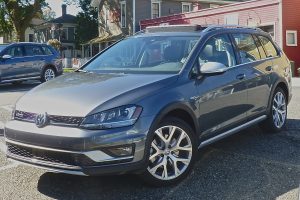
Alltrack proved surprisingly adept at some rocky off-roading as on the highway or on small-town streets.
After completing the course, I suggested my partner should drive, but he complimented me by saying he’d prefer that I drive another lap while he shot video of my work. I agreed heartily, and off we went.
He pointed out afterward that, as he suspected, at one point the Alltrack lifted one front wheel completely off the surface. That was indecipherable inside the cabin, which proved conclusively how stiff the platform was. Usually you can feel the platform flex when it lifts a wheel, but it’s obviously far more stable when it might lift a wheel and you can’t feel any loss of steering or handling control.
This is, for technocrats, the fifth generation of 4Motion, and it includes something called an “electro-hydraulic controlled clutch-pack differential.” I couldn’t resist following our off-road trek by complimenting a VW official: “How very Jeep-like.” It was intended as the ultimate compliment.
Trust me, as impressive as the Alltrack is representing a sports-sedan-wagon on the curving roadways, it is as impressive as some off-roading-specific vehicles whenever you need, or want, to venture off the beaten path onto some unbeaten pathways.
The next day, we escaped the Seattle-area’s freeways and headed for Snoqualmie. At the Mount Si Golf Club, we found our assorment of other 2017 VW models, the Tiguan, Passat, Jetta, GLI, Golf, GTI-R, and the e-Golf. We can deal with most of them more thoroughly at a later time, but while all of them were impressive in their solid stance and peppy performance, the e-Golf and a base model of the Jetta blew me away.
The e-Golf is pure electric, with an 83-mile range before requiring recharging. It has startling acceleration, and it handles twisting roadways with Golf-like precision — all the while remaining silent.
Several Jetta models were available, but one was equipped with a 1.4-liter turbo 4-cylinder and a 5-speed manual transmission. While I have a new favorite in the 1.8 turbo, the smaller 1.4 turbo felt more than adequate for power and acceleration. “And it is an even more modern engine,” said technical spokesman Mark Gillies.
“The 1.8 is from the EA 888 family of 4-cylinders, and the 1.4 is from the EA 211 family of smaller 4-cylinders with the latest in technology.”
As the base engine, it will leave consumers needing to spend less and get more fuel economy, while having the same amount of driving satisfaction. Maybe it’s just the latest gambit by Volkswagen to apologize to potential customers for the ongoing turbodiesel embarrassment. If the new VWs are priced at a discount because of that, we can happily settle for spending less to get almost-diesel-like fuel economy while knowing we’re still getting VW’s legendary German quality.


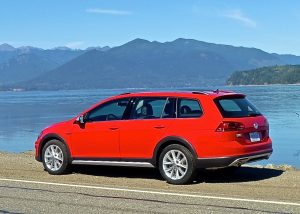
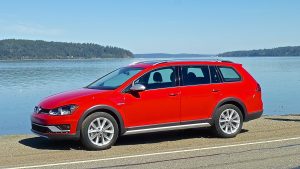
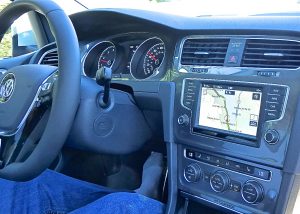
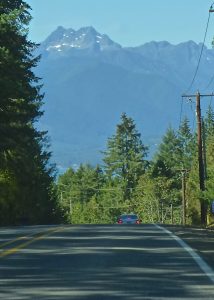
 John Gilbert is a lifetime Minnesotan and career journalist, specializing in cars and sports during and since spending 30 years at the Minneapolis Tribune, now the Star Tribune. More recently, he has continued translating the high-tech world of autos and sharing his passionate insights as a freelance writer/photographer/broadcaster. A member of the prestigious North American Car and Truck of the Year jury since 1993. John can be heard Monday-Friday from 9-11am on 610 KDAL(www.kdal610.com) on the "John Gilbert Show," and writes a column in the Duluth Reader.
John Gilbert is a lifetime Minnesotan and career journalist, specializing in cars and sports during and since spending 30 years at the Minneapolis Tribune, now the Star Tribune. More recently, he has continued translating the high-tech world of autos and sharing his passionate insights as a freelance writer/photographer/broadcaster. A member of the prestigious North American Car and Truck of the Year jury since 1993. John can be heard Monday-Friday from 9-11am on 610 KDAL(www.kdal610.com) on the "John Gilbert Show," and writes a column in the Duluth Reader.